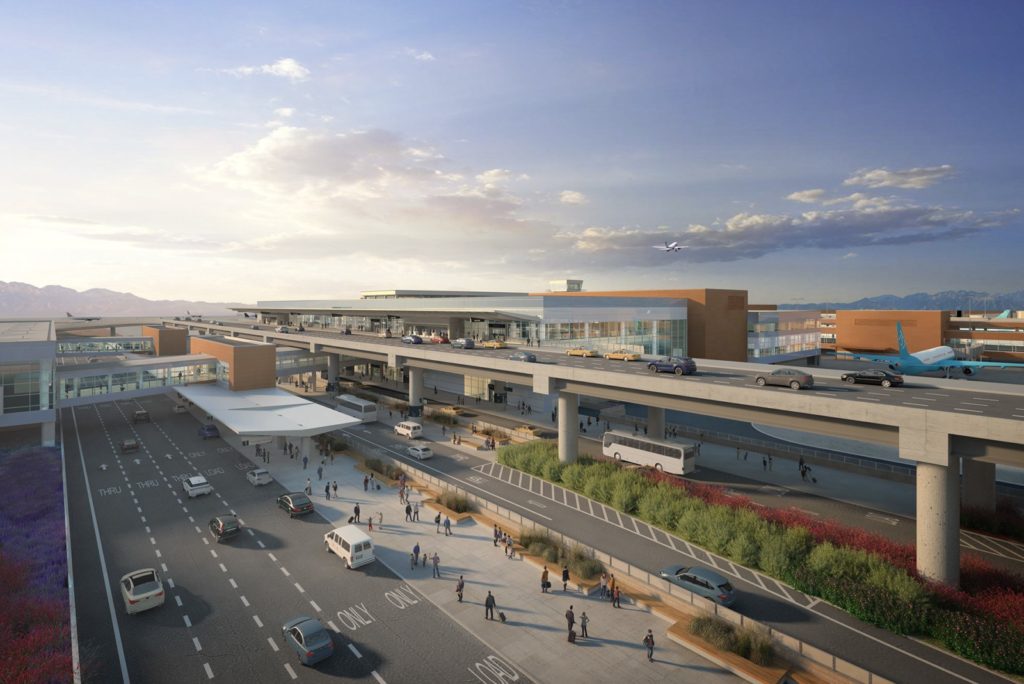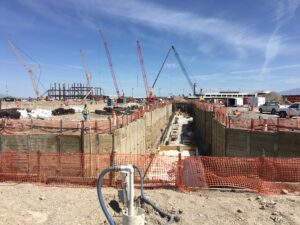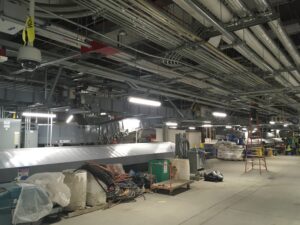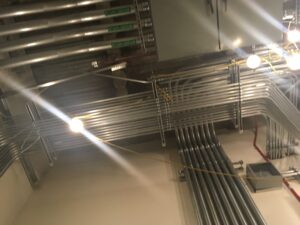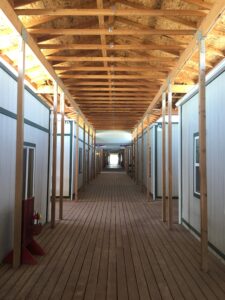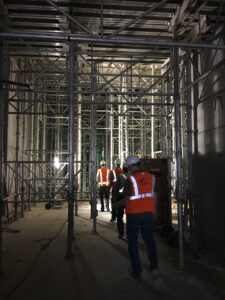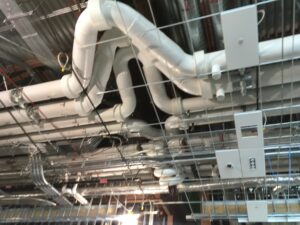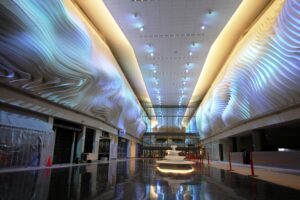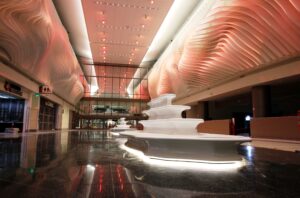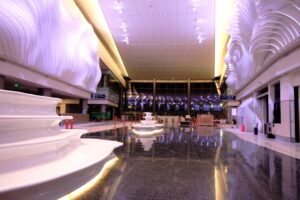Named the 2020 Building Project of the Year by Utah Construction & Design Magazine, the Salt Lake City International Airport Redevelopment has truly been a once-in-a-lifetime project. The phase that just opened to the public back in September of 2020, took approximately 6 years to complete. In this post, our chief engineer shares his thoughts about this incredible feat, as well as interesting bits of information from behind the scenes.
Almost as much going on below ground as above.
It is surprising the amount of work that needed to go on below ground before anything started to rise out of the ground. Thousands of aggregate piers, 35 feet deep had to be installed to help mitigate potential seismic induced liquefaction. Thousands of steel piles up to 130’ long had to be installed to support the building foundations. Hundreds of foundations tied together with miles of tie and grade beams were installed to support the structure, and keep the foundation system from spreading during a seismic event. Tunnels and basements for passengers and utilities were installed, and waterproofed because of the high water table.
Conduits, Conduits and More Conduits
It is surprising the number of conduits required for an airport. Conduits for electrical, technology, communications, systems controls, and power are everywhere. In the ground, under the floors, in the floors, under the roofs and in the walls. They want to be hung from everything and go through everything.
Lessons Learned
With the project taking so long to design and construct, 6 years and counting, one of the great things has been tracking lessons learned throughout the project and applying them to future phase of construction. Lessons to ease installation, minimize slab and wall cracking, addressing additional loading requirements, items to minimize disruption to new construction, have all been implemented as the project moves forward.
“If you build it, they will come”
If you put up structure at an Airport, people will want to attach things to it or poke holes through it. Monitors, signs, cable trays, piping, etc. Masonry partition walls are a favorite for requests to support or brace equipment. With miles of these walls to be installed on the project, it made sense to make them as cost effective as possible by not engineering in extra capacity. This has made the requests for attachments and support difficult to honor. Fortunately, the length of the project has cycled through multiple building code cycles, and the new codes have required higher strength masonry block, which has given the walls increased capacity by default, as the project moves on.
Technology Moves Quickly
As technology continues to improve, more and more things are devised and invented that can make things better at the airport. As the airport design and construction has moved forward, more and more advanced technology systems are becoming available and can be added to the project to make things better for passengers, airport employees and the airlines. These items all need supporting as well as power and data connections which means more and more items added to already crowded utility spaces.
Trailer City
It takes an army of support workers to keep the nearly 2000 construction workers moving forward on the project. Thousands of submittals and RFI’s to process and keep track of. Mountains of drawings and specifications to pour through. Where do you put all the people that handle all the paperwork? A typical one or two job site trailers just won’t cut it. You build a trailer complex of dozens of trailers attached together with covered walkways, restrooms, a breakroom, and more than a dozen conference rooms. And that doesn’t include all of the sub-contractor trailers on the other side of the parking lot. Oh, and by the way, there is another one of these, slightly smaller, on the north side of the project.
Sometimes it Takes a Structure to Build a Structure
Scaffolding and shoring are an essential part of construction. Contractors engineer their own temporary structures to support men, materials and equipment until the main building structure is ready to support loads. At the Airport construction site, some of the very large volume spaces with heavy loads, were required to be supported led to some vast temporary support structures. At the Terminal basement, the shoring posts, that were over 25’ tall, were spaced so tightly, that ropes were required to map access and egress paths in and out of the shoring forest.
Seismic Joints are Heartburn for Everyone
Seismic joints are a necessary evil of large construction projects. The parts of the building are built in segments so that the different parts of the building can move as smaller independent segments, instead of a larger building tearing itself apart as a single structure in an earthquake. With around 20 seismic joints in the project, (Most typical projects would have only one or two, or likely none.) it presents all trades involved with challenges. Architects must find a way to cover the joints, but yet still allow them to move during an earthquake. Mechanical, electrical and piping trades must provide flexible joints as their components cross these joints. These flexible joints take up additional space in an already very crowded environment.
The Structure Worked Well
On Wednesday, March 18, 2020, the new Salt Lake Airport experienced a 5.7 magnitude earthquake with the epicenter within 5 miles of the site. The structure held up well with no apparent damage to the main structures. Some minor partition wall cracks were found, along with some gyp board damage where mechanical and piping equipment were penetrating walls. But work was able to continue the next day, and repair work was minimal.
This Project is Huge
This project, when finished will include over 2 million square feet of new concourses. Almost 1 million square feet of new terminal. A 1.7 million parking structure. Two tunnels for passengers to pass through each over 3000 feet long. New rental car facilities and a new central utilities plant. The area that the project occupies is almost the equivalent of 20 city blocks. The cost is estimated to be $4.1 billion.
Written by Tyler
Chief Engineer
Tyler’s biggest passion is his children. “In this world, it is to easy to be too busy for your kids. Make time for your kids throughout your life because those opportunities to teach and experience things with them go by all to quickly.”
https://utahcdmag.com/2021/01/building-project-of-the-year-salt-lake-city-international-airport-redevelopment-program/
